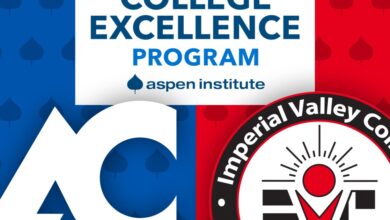5 Educational Trends to Know About

It won’t be wrong to say the educational landscape is evolving more quickly than ever. This sector has witnessed a rapid shift towards high-tech approaches due to developing technology and innovative research-led learning methodologies.
Despite significant global turmoil, the past two years saw many advancements in digital solutions in education, such as the broad adoption of online education, an increase in the usage of apps, and hybrid learning. It is expected that digital technology will continue to be used in education in the future as well.
But apart from online learning, what are the expected educational trends for the coming year?
Continue reading about some educational trends that are currently shining and some that are slowly taking over.
-
Online Learning
Online learning is at the top of the list of the most popular educational trends right now. Unfortunately, the entire globe was essentially under lockdown when COVID-19 happened. Teachers and students could not attend in-person classes, and online education was the best option for every educational institution.
But the trend has remained and accelerated even after the pandemic. Online schools are increasingly replacing traditional on-campus options. And it appears that the best way to sustain and guarantee academic achievement is through online education. It provides accessibility, flexibility, and ease that doesn’t come with on-campus learning.
So with the surge of online programs being offered by institutions, it is also essential to do proper research before enlisting in one. So find ones that can help you reach your personal and professional goals and have a good faculty.
If you are struggling to pick one for your master’s, the Florida Gulf Coast University online programs offer outstanding value with a top-notch faculty that prepare you for a wide range of leadership jobs.
-
Nano Learning or Bite-Sized Learning
The information age has resulted in a decrease in attention spans and an increase in screen weariness. Every day, our minds are flooded with distracting signals and notifications. Cortisol, the stress hormone, rises in response to these signals. As a result, it is physically impossible for us to focus and comprehend a large amount of information.
So how do we handle this issue in the classroom? Nano-learning is the solution.
Simply said, nano learning is a bite-sized learning approach. It entails giving students information in fewer doses and over a shorter period. It has been demonstrated that learning in small proportions improves our capacity to assimilate and remember information. In addition, you are considerably more likely to boost your students’ productivity, hold their attention, and facilitate their learning if you give them “pellet-like” pieces of information. The typical student’s attention span is reportedly between 10 and 15 minutes. But for small children, it tends to get shorter.
-
Augmented Reality (AR) and Virtual Reality (VR)
Innovations in augmented reality (AR) and virtual reality (VR) are making their way into the classroom. To fully experience VR, a headset is necessary. Users can watch and interact with a real or virtual world created by this device’s digital interface, which projects images. Additionally, it features simple teacher controls and gesture controls. While it’s true that some VR headsets are pricey, Google Cardboard and other comparable options provide a more accessible VR experience, requiring only the user to place their smartphone into the viewer.
On the other hand, augmented reality is easily accessible via a smartphone or tablet. The technique uses the device camera to project images, sound, and video, which are then similarly shown on the screen. You could be staring at a panda next to your desk if you use Google search, for instance, to observe different animals in your surroundings. Try it out by doing a “panda” search on your smartphone. Students are drawn to digital technologies such as virtual reality because they stimulate them to think outside the boundaries of the classroom.
-
Project-Based Learning
A “project-based learning” teaching strategy actively involves the students in real-world projects. Another name for this is experiential learning. The notion is that teachers serve as hands-on facilitators while students “learn by doing.” The goal is for students to examine and provide feedback on a real-world problem or issue. Individuals cannot progress if they merely adhere to the concepts taught in textbooks. Through Project-Based Learning, students will gain the critical thinking, creativity, cooperation, and communication skills that companies highly value and are highly sought after in today’s business environment.
Traditional education generally only covers intellectual material. Project-based learning exposes students to the world outside the classroom. It equips them with the skills necessary to embrace and overcome problems in the real world, much like professionals do daily. In addition, project-based learning allows students to interact extensively with the target topic, focusing on long-term retention rather than short-term memorizing.
You could assign your students the following project topics:
- Identifying a local environmental issue and finding solutions
- Expressing views on a highly contested problem
-
Gamification
The most recent developments in educational technology are becoming more and more popular since they boost student engagement. For example, gamification has been applied in classrooms through leaderboards, reward points, medals, stickers, and more. And gamification is the only trend in educational technology that ensures a rise in engagement, participation, and competition.
Students actively participate in class activities to improve their grades and leaderboard ranks. Additionally, better performance and higher retention result from the desire to lead the scoreboards. Finally, gamification encourages students to study and practice, which enhances the overall learning experience. Therefore, teachers employ gamification to improve motivation, promote engagement, and foster an interactive learning environment. Whatever the scenario, it helps raise students’ spirits and motivates them to provide their best consistently. As a technique to improve learning methods, we can already see this trend being used more creatively.
Bottom Line
This concludes our list of the top educational trends to watch in 2023 and beyond. It’s interesting to see where education is going. While some methods might not change, the new technology improves educational opportunities without raising expenses.
The learning environment for students of all ages is also being improved through innovative science-based teaching strategies. We hope these developments will benefit the present student era and allow educational institutions to use them to build a better generation for the future.






